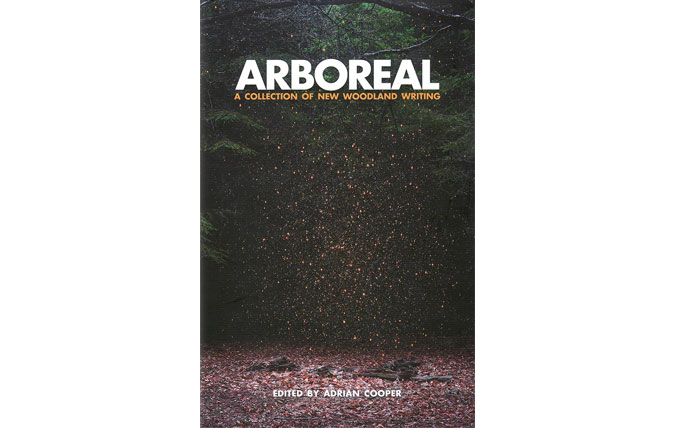Book of the week: Arboreal
This outstanding new collection gives Mark Griffiths hope for the future of our trees and woodlands.


Arboreal Edited by Adrian Cooper (Little Toller, £20)
Failure on the part of politicians to judge the mood of the people did not begin last year. In 2010, the Government proposed selling off England’s publicly owned woodlands. There came an outcry of such volume that the plan was abandoned. Ministers, it seems, had not reckoned on one of the best aspects of the national character—our long-standing love of trees, which has never been more widespread, heartfelt or knowledgeable than at present.
In recent years, it has gained substance from history and ecology, urgency from environmental concerns and rampant urbanisation and expression in new plantings, charitable organisations, fine art and literature. The people, if not always the Government, now understand that trees, our leafy countrymen, need our support and we theirs.
"They range from studies of single trees and objects to surveys of entire forests and life systems"
One of this spirit’s most striking manifestations yet is Arboreal, a collection of new woodland writing. Of course, trees have long inspired writers in English, but this volume presents the crop of our current interest in them—an interest so powerful and productive that Nature writing is emerging from the fringes to take the literary centre ground.
This development owes much to the interdisciplinary work of Oliver Rackham, the great Cambridge historical ecologist who died in 2015. Arboreal is dedicated to his memory and he is vividly recalled in a moving introduction by its editor Adrian Cooper, the founder of Little Toller Books, which published Rackham’s monograph The Ash Tree.
Woodland has elicited an astonishing variety of responses from Arboreal’s 41 literary contributors—poems, memoirs, short stories, polemics and essays in natural and topographical history. In focus, they range from studies of single trees and objects to surveys of entire forests and life systems.
Images intersperse these texts, among them photographs of the sculpture that Andy Goldsworthy made from materials found in the woods at Dorset’s Hooke Park in 1986, David Nash’s charcoal drawings commissioned by Common Ground in the wake of the Great storm of 1987 and the pick of Kathleen Basford’s collection of specimens of the Green Man, the ancient spirit of the forest long ago petrified in architecture, but who now, surely, lives in our consciousness again.
Sign up for the Country Life Newsletter
Exquisite houses, the beauty of Nature, and how to get the most from your life, straight to your inbox.
The literary line-up is twice-starry, comprising some very big names and some who are, for the moment, less well known but no less brilliant. If, as you must, you buy this book, you will doubt less find favourites, but I’ll mention a few of my own, on the understanding that any singling out from such an assembly is horribly invidious.
I have relished Two Storms, William Boyd’s characteristically humane and wistfully humorous account of growing trees in France; What is a Tree?, Germaine Greer’s splendidly nuts-and-bolts discourse on arboreal science; and Still Lives, a meditation on a beechwood bowl by the masterly Richard Mabey. Why Woods Matter, Fiona Reynolds’s deeply informed and dazzlingly incisive critique of the recent management of the nation’s forests, left me shouting Quis custodiet?
An essay on the relationship of woodland birdsong to language and music, Birdsong by Jay Griffiths, echoes in my memory as the most musical new prose that I’ve read in years. No less haunting is Ali Smith’s magical story The Green Stuff, a fairy tale for our tree-revering times, in which a child encounters his chlorophyll-coursed counterpart, the Green Man as an infant.
I’ll end on another of this collection’s treasures, Philip Hoare’s evocative and provocative essay Arborotopia. He quotes a prediction made by T. H. White in the 1930s: ‘One day the New Forest will be the name of a Tube station.’ With voices as eloquent as Arboreal’s to speak for our trees, that day should grow ever more distant.
Country Life is unlike any other magazine: the only glossy weekly on the newsstand and the only magazine that has been guest-edited by HRH The King not once, but twice. It is a celebration of modern rural life and all its diverse joys and pleasures — that was first published in Queen Victoria's Diamond Jubilee year. Our eclectic mixture of witty and informative content — from the most up-to-date property news and commentary and a coveted glimpse inside some of the UK's best houses and gardens, to gardening, the arts and interior design, written by experts in their field — still cannot be found in print or online, anywhere else.
-
 Burberry, Jess Wheeler and The Courtauld: Everything you need to know about London Craft Week 2025
Burberry, Jess Wheeler and The Courtauld: Everything you need to know about London Craft Week 2025With more than 400 exhibits and events dotted around the capital, and everything from dollshouse's to tutu making, there is something for everyone at the festival, which runs from May 12-18.
By Lotte Brundle
-
 Everything you need to know about private jet travel and 10 rules to fly by
Everything you need to know about private jet travel and 10 rules to fly byDespite the monetary and environmental cost, the UK can now claim to be the private jet capital of Europe.
By Simon Mills